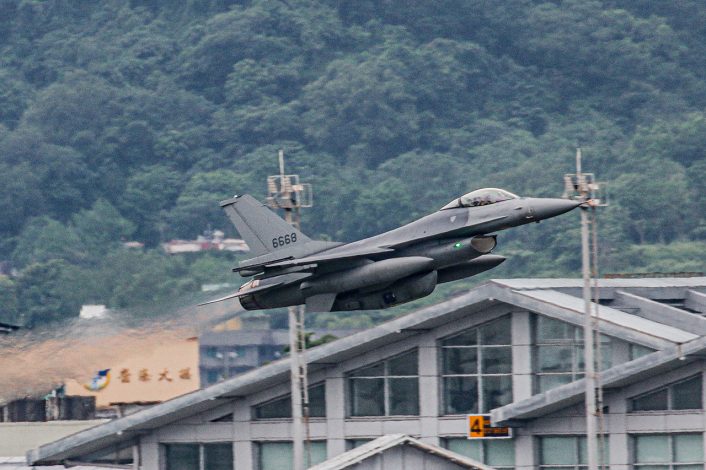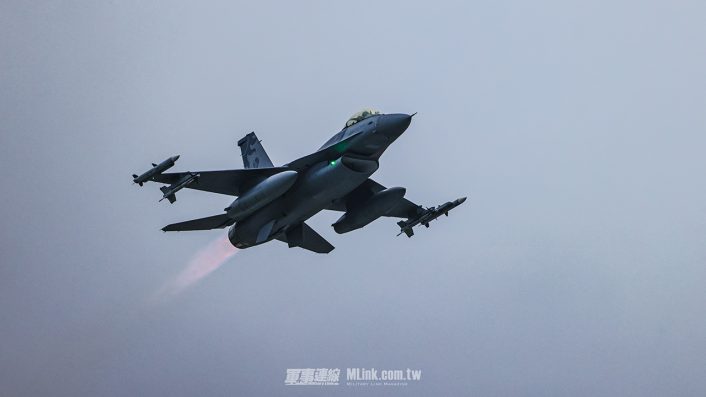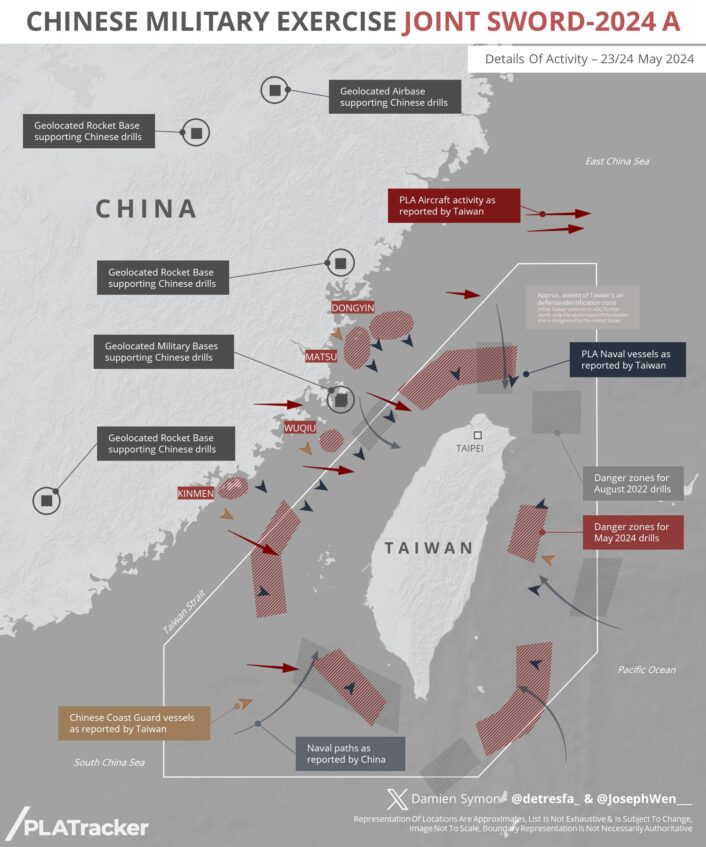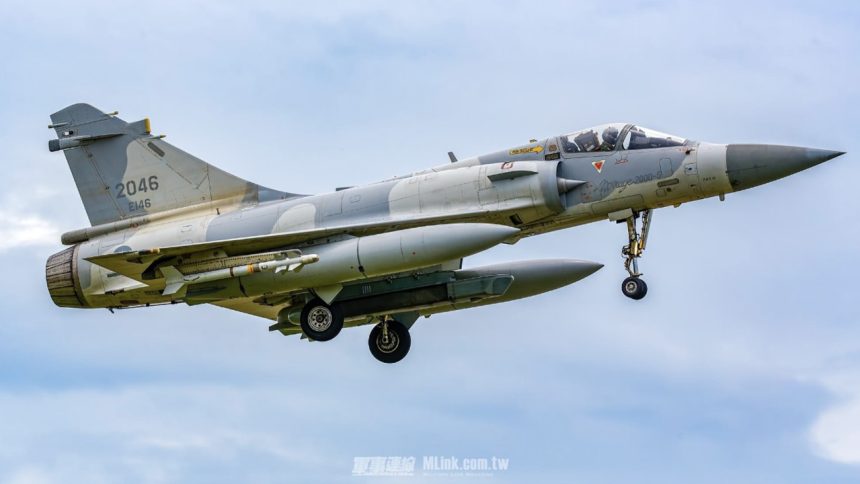We take a look at how Taiwan responded to the Chinese build-up around the island during the second day of Joint Sword-2024A exercise.
Tensions around Taiwan continue to simmer, as by the evening of May 24, 2024, Taiwan’s military reported a total of 62 PLA aircraft and a mix of 27 PLAN and CCG (China Coast Guard) vessels operating around the main island. Of those, 47 crossed the median line and breached Taiwan’s ADIZ.
NEW: Taiwan’s military is reporting a total of 62 PLA aircraft and a mix of 27 PLAN and CCG vessels operating around the main island as of 21:40 Friday night.
47 of those aircraft crossed the median line and breached Taiwan’s ADIZ
— Jaime Ocon 歐海美 (@JaimeOcon1) May 24, 2024
China on May 23 launched Joint Sword-2024A in retaliation to new President Lai Ching-te’s May 20 speech, where he advocated separatism, independence and seeking support from foreign powers towards that goal.
By the evening of May 23, RoCN MND (Republic of China, Ministry of National Defense) had declared detecting 49 PLA aircraft of “various types,” including Su-30, J-16, KJ-500 AWACS (Airborne Warning and Control System).
Overall 49 #PLA aircraft in various types(including SU-30, J-16, KJ-500 etc.)were detected from 0720hr today. Out of which, 35 crossed the median line of the #Taiwan Strait and entered the north, central and southwest parts of Taiwan’s ADIZ in conducting “Joint Sword-2024A” drill pic.twitter.com/TjPu5gxMVO
— 國防部 Ministry of National Defense, R.O.C. 🇹🇼 (@MoNDefense) May 23, 2024
Of these, 35 crossed the ‘median line’ of the Taiwan Strait and entered the north, central and southwest parts of Taiwan’s ADIZ (Air Defense Identification Zone). The map showed one aircraft traveling north, parallel along the median line, then turning east to cross the boundary to come close to 40-km of the island’s northern tip. Another aircraft crossed the median line to come 57-km close to Taiwan’s southernmost tip.
#Peace is priceless.
There are no winners in wars.
In the face of the CCP’s military drills, what we always believe and uphold is democracy and freedom.
Regional stability is the universal goal, and we will continue to protect our beautiful homeland.#Shieldofdemocracy pic.twitter.com/3NRQERpux3
— 國防部 Ministry of National Defense, R.O.C. 🇹🇼 (@MoNDefense) May 24, 2024
Taiwan has an ADIZ, created by the United States Armed Forces after World War II, that covers most of Taiwan Strait, part of East China Sea and adjacent airspace. As per other ADIZs around the world, this Air Defense Identification Zone, is not defined in any international treaty and is not regulated by any international body: it is mostly over international airspace (territorial airspace begins only 12 miles from the coastline), hence, an intrusion into an ADIZ is not a violation of sovereign airspace. ADIZs extend well beyond a country’s territory, usually in the vicinity of contested areas, to give the country more time to respond to possibly hostile aircraft.
Taiwan Features its Military
Taiwan too released footage of its military undertaking preparations and deploying for sorties to monitor the Chinese military maneuvers. These featured F-16 Vipers, Patriot AD (Air Defense) systems, wheeled APCs (Armored Personnel Carrier), Mirage 2000 fighters and naval personnel from warships observing a PLAN Type 054A frigate.
Tightly monitoring!#ROCArmy, #ROCNavy, #ROCAF and coast guard are taking concrete actions to safeguard #freedom and #democracy!@mna_roc @YDN_NEWS pic.twitter.com/Ayhb4ayfye
— 國防部 Ministry of National Defense, R.O.C. 🇹🇼 (@MoNDefense) May 24, 2024
The F-16s launched also carrying the recon pod as images taken by Adler Hu (@XS.HU) for Military Link show.

While the images taken on May 23 mainly showed F-16Vs loaded with inert missiles, the aircraft on Alert were loaded with Live missiles. On May 24, Mirage 2000 and F-16s carried also live missiles as well as ALQ-113 ECM pods.

Another promotional video advocating saving Taiwan’s “peaceful” “democratic” system from China’s “authoritarianism,” showed its F-CK-1 indigenous fighter and the P-3C Orion MPA (Maritime Patrol Aircraft).
The CCP’s military exercises, which highlight its hegemony mindset, have undermined regional peace and stability. The ROC Armed Forces stand ready to defend our country. We seek no conflicts, but we will not shy away from one. pic.twitter.com/6F3imAsi3u
— 國防部 Ministry of National Defense, R.O.C. 🇹🇼 (@MoNDefense) May 23, 2024
Interestingly, the ROCAF also released footage shot by the F-16V with the Sniper ATP.
PRC Reveals its Military Operation
China also released extensive footage of its military equipment and crews undertaking preparatory drills. These included a road mobile TEL (Tele-Erector Launcher) readying a DF-11 surface-to-surface ballistic missile, PHL-16/PCL-191 MLRS (Multiple Rocket Launch System) moving into position.
The commander counts down but the missiles don’t fire, suggesting it was a readiness drill to refine launch sequences and procedures. An H-6 bomber is also taking off from an unidentified air base. A J-16 or a Su-30MKK, carrying an AAM (Air-to-Air Missile) on the outer pylon also leaves a hangar, while an inflight shot from a cockpit shows a pair of H-6Ks.
But what was intriguing was a promotional computer generated video by China’s ETC (Eastern Theater Command) showing a simulated joint strike on Taiwan. That showed dozens of surface-to-surface missiles, MLRS, land-strike missiles by PLAN warships, ALCMs (Air-Launched Cruise Missiles) from J-10, Su-30/J-16, streaking towards Taiwan and landing on its southern, northern and western tips.
Video from PLA Eastern Theater Command showing simulated joint strikes on Taiwan. pic.twitter.com/X5FYGlqXve
— Ben Lewis 🇺🇦 (@OfficialBen_L) May 24, 2024
These targets could include air defense placements, land-fired anti-ship missile units, ports and major airfields and runways coming under simultaneous, sudden attack. Such strikes on supporting infrastructure make any remaining forward combat units, like aircrafts or ships, futile as they have no bases to return to even after successful tactical engagements.

China Still has Military Hurdles to Iron Out
This video validates a previous analysis in The Aviationist, about how a Chinese military invasion of Taiwan would be a sudden, large multi-front coordinated combined arms maneuver to overwhelm Taiwan’s military and political leadership. China’s challenge however remains quickly reaching Taiwan’s western coast, for which the Type 075 amphibious landing ships come in handy.
To reach the island’s eastern shores, China can easily use the several civilian RoRo (Roll On-Roll Over) vessels to transfer troops, armor and vehicles. But the seas are rougher deeper into the western Pacific, which only a naval amphibious carrier can withstand.
It is a different matter that Chinese vessels have now begun operating on the western coast with its destroyers, frigates and aircraft carriers. But until it possesses a full fleet of ready LPDs (Landing Platform Docks), putting boots on the ground from sea-to-land would be an immensely challenging undertaking. It is therefore likely that China would until then keep practicing provocative and threatening maneuvers around Taiwan until the Fujian carrier is operational and the LPDs have been inducted.
The current drills around the island do not however match up to the scale and unprecedented nature of the August 2022 exercises. These saw several firsts: the drills had live fires; simultaneous maneuvers at six locations around Taiwan; missiles flying over Taiwan to land in its western waters; and the full operational use of the J-20 stealth fighter. But these were also commensurate with the political event they were in response to, which included the then Speaker Nancy Pelosi visiting Taipei.









